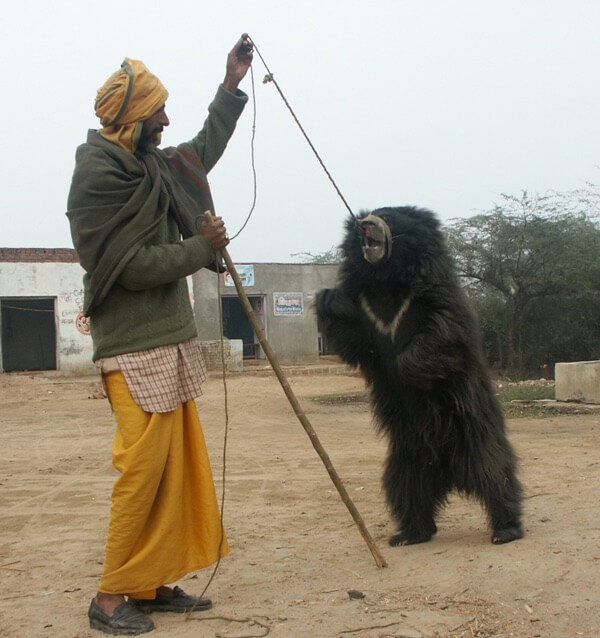Can poverty kill Tigers?

by: Surya Kant Pawar
IFS 2015 batch
Can poverty kill Tigers?
On the fifteenth of march 2016, few days ahead of the Asian ministerial meet on tiger conservation, the special task force (STF) of Uttarakhand police has confiscated the skins of five tigers from a gang of poachers. The STF also seized tiger skulls, bones, jaw and nails weighing over 125kg and arrested one poacher. The black market value of this consignment is around Rs 80 lakh to Rs 1 crore.
The Modus Operandi
The arrested poacher, Ram Chandra, alias Chandar, is a member of the notorious Bawaria gang. Describing the modus operandi, he revealed that the members would camp in the forest and place metal foot traps at various locations. These locations are decided after following the trail of a tiger, usually by detecting pug marks.
Once trapped, they beat the cats with sticks and rods till it dies!
There is no demand for either bones or skin in the Indian market, so what drives this poaching? This thrives on the market for bones from wild tigers being used in traditional oriental medicine, coupled with international trade in tiger skins. This, in turn, can be attributed to a couple of factors. First, the slack international laws/treaties to deal with cross-border trade. Secondly, the lacuna in national laws of south eastern countries to stop usage of animal parts in medicine and as luxury items and lastly, the inability to stop animal farming.
But only international environment could not be driving poaching; it requires favorable local conditions too. It parasites upon lopsided socio-economic structure and loopholes in the security environment.
Socio-Economic Plays a Role
Here are few such local (national) conditions:
- Socio/economic marginalization of tribes esp. after Wild Life (Protection) Act, 1972.
• Involvement of Naxals (in red corridor) and insurgents (in N-E India) in poaching.
• Porous boundaries with Nepal , South east Asia.
• Human Resource problem: strength/skill problem with the human resource of forest department, Wildlife crime control bureau, non-establishment of tiger protection force in vulnerable parks like Corbett.
In this write up we will focus on the socio-economic angle to poaching. Let us understand this through one of the cases which we came across during our west India tour as IFS probationers. We visited sloth bear rescue center of an NGO: Wildlife SOS. And memories of childhood came raining. Can you recollect memories of dancing bear shows from childhood? I can; that was the only circus for us back then. To our amazement bears used to walk as though they are drunk, dance on their hind legs, or limp like an elderly person. These artists who could make beast dance on their tune were from Kalandar tribe, this was their traditional occupation since ages. They used to camp outside villages, males used to go in villages to showcase bear dance, and females used to make handicrafts/articles out of metal sheets. I as a child always enjoyed these bear shows and never missed giving wheat flour. Many times I got scolding from my aunt that why I take tiffin full of flour every time and that too so tightly packed to these people.
The Bear Dance
But then one day they stopped coming just like snake charmers. Actually, under Wildlife Act 1972, these activities were declared illegal and with time when the law got implemented properly. For us, this entertainment stopped and for kalandars their traditional occupation got closed. In 2000’s we got dish channels for our entertainment but for kalandars there was no alternative; the only skill they had was to catch wild bears and train them to dance. But why did government do that to them?
To understand that why this stopped, let’s go in details of the work of kalandars. They used to poach bear as cubs and kill mother bear. They pierce cub’s nose when its age is about 3 months. A heated metal rod was thrust into its muzzle, through the upper palate. A thick rope was put through the hole. The cub’s teeth were shaved by metallic file or knocked out using a hammer. After that, the bears underwent training. Initially wound in pierced nose is very raw. So, as a result, when the Kalandar trained the bear to move, to warn it, a stick was lifted and the rope was pulled – which caused pain. Hence, beast danced!

Buy what has that got to do with Tiger Poaching?
But what kalandars have to do with tiger poaching? India is a land of diversity where dwell hundreds of tribes; it is also land of unity, that is to say that many tribes have met the same fate as that of kalandars. But we missed one important point that these tribes still have skills which can be used in poaching and they are already on socio-economic margins of society, from where the option to collude with international poachers and their suppliers is quite tempting.
Let’s go back from where we started: observations made during west india tour. We came to know that in ranthambore area ‘Mongia’ tribe and in Madhya Pradesh ‘Pardi’ tribe are infamous for tiger poaching as ‘kalandar’ tribe is for poaching of sloth bear. And there are similar numerous infamous tribes living on fringes of the economic spectrum, so they are the target of poaching groups like bawaria. Poaching groups come to their area and befriend them. These tribes have knowledge of forest area and how to track these animals. Poachers camp in the forest, follow tiger trail with help of local tribals and place metal foot traps at various locations. Once the tiger is trapped, it tries to break free and injures itself. It’s cries signals that the beast has been trapped.

Once trapped, they beat the cats with sticks and rods till it dies! So what can be the solution to this?
So What’s the Best Fix?
Skilling and educating tribal children is definitely one way out of this problem. This would provide them alternate job opportunity, take them out of impoverishment, and sensitize a whole new generation and generations to come. Panna tiger reserve offers an interesting case study. Pardis lived in this area. Their villages were relocated from the core area of the park and their crops were many times damaged by wild animals. They used to be dependent on the forest for firewood and herbs, which took a beating after it was banned. It had become necessary to take them into confidence. So the park provided them alternate employment by arranging training in the hospitality industry for their children.
Forest department faced a stiff challenge in convincing them as parents did not want to send their children outside their villages. The training was organised with the help of an NGO: Pratham Education Foundation. Earlier, the park arranged for formal education for their children with the help of World Wide Fund for nature (WWF). In addition to that ‘Residential bridge courses’ around Panna, under the state government supported ‘Sarva Shiksha Abhiyaan’ is being conducted. This bridge course prepares these pardi kids to enter the formal education system.
Similar is being tried with mongia tribe in ranthambore area but such initiatives need to be scaled up and stakeholders like state government, forest department and NGOs need to converge their efforts.
Can Wildlife Tourism Fix this?
Eco-Tourism is another step that negates Poaching. This generates alternate avenues for livelihood directly and indirectly. If this tourism is stopped even temporarily then livelihood of locals will get adversely affected. The locals, guides, shopkeepers, local guards and gypsy owners will face losses as their business will be hit. The gypsy owners will find it burdensome to pay the EMIs of their vehicles. In such a case, there are chances that they might indulge in illegal activities, including helping poachers.
So wildlife tourism is very helpful for wildlife conservation & protection.
But before this article paints the picture too gloomy and doomy, let me reiterate what has been written so many times that if tigers have got any hope then India is surname to that. India’s tiger headcount has gone up by more than 30 percent in the past four years, according to the latest survey on tiger population which was released in 2015. The survey records headcount to be 2,226, up from 1,706 in 2010. India now is home to about 70 percent of tigers in the world. But still there are a lot of areas to cover and work to do, let’s gear up and get back to work.
Jai Hind.
[by our guest writer Surya Kant Pawar. Indian Forest Service probationer 2015 batch. currently undergoing training in IGNFA, Dehradun. Mechanical Engg graduate from IIT Kanpur.]

[The opinions expressed by the author are of his own and not that of WildTrails]
————————————–
WildTrails of India – “One Stop Destination for all Indian Wildlife Enthusiasts“
PS: Please be a responsible wildlife tourist; No littering, No sounds, No feeding, no getting down from the safari jeep (when on safari), No phone calls. Remember that we are visiting their home and when we are there, let’s follow their rules.
[The WildTrails of India is the best way to get all the details about Indian wildlife sanctuaries (best travel times, safari details, animal sightings, forest accommodations pairing, wildlife related activities, prices, etc). Learn more about WildTrails of India here. ios App is here. Android here, facebook page here ]
————————————–
With 4 years of Sightings data + Extensive expert tracker network in jungles, our customers had the best wildlife experiences.
Buy Wildlife Fashion Accessories
Exclusive Online Store for wildlife products
Packages
Packages Loading...
Recent Posts








